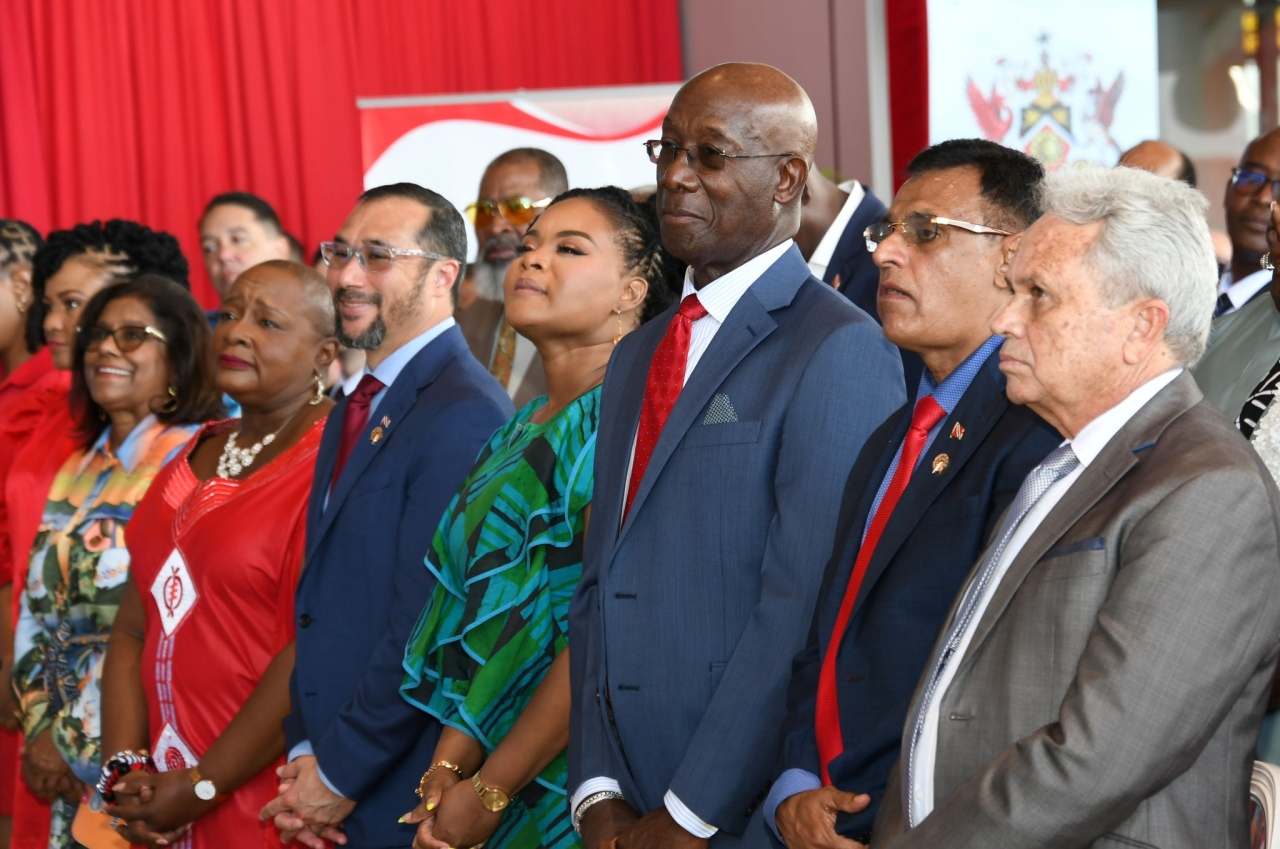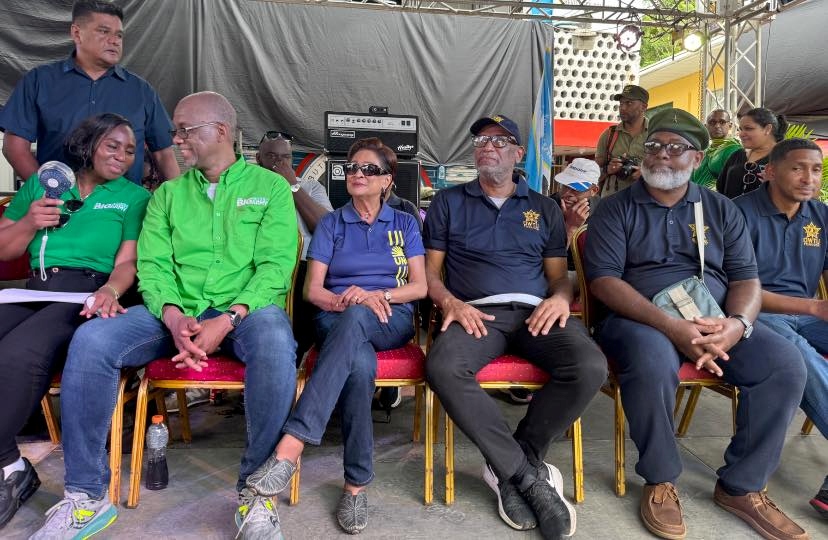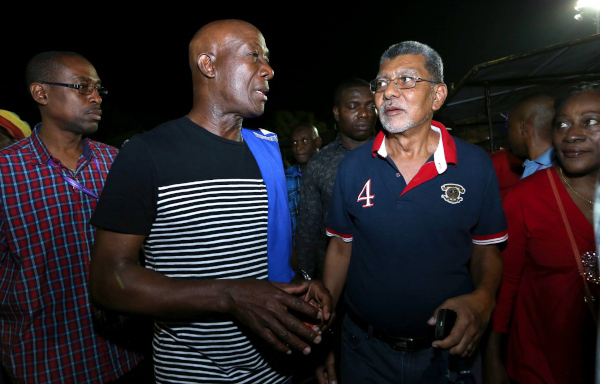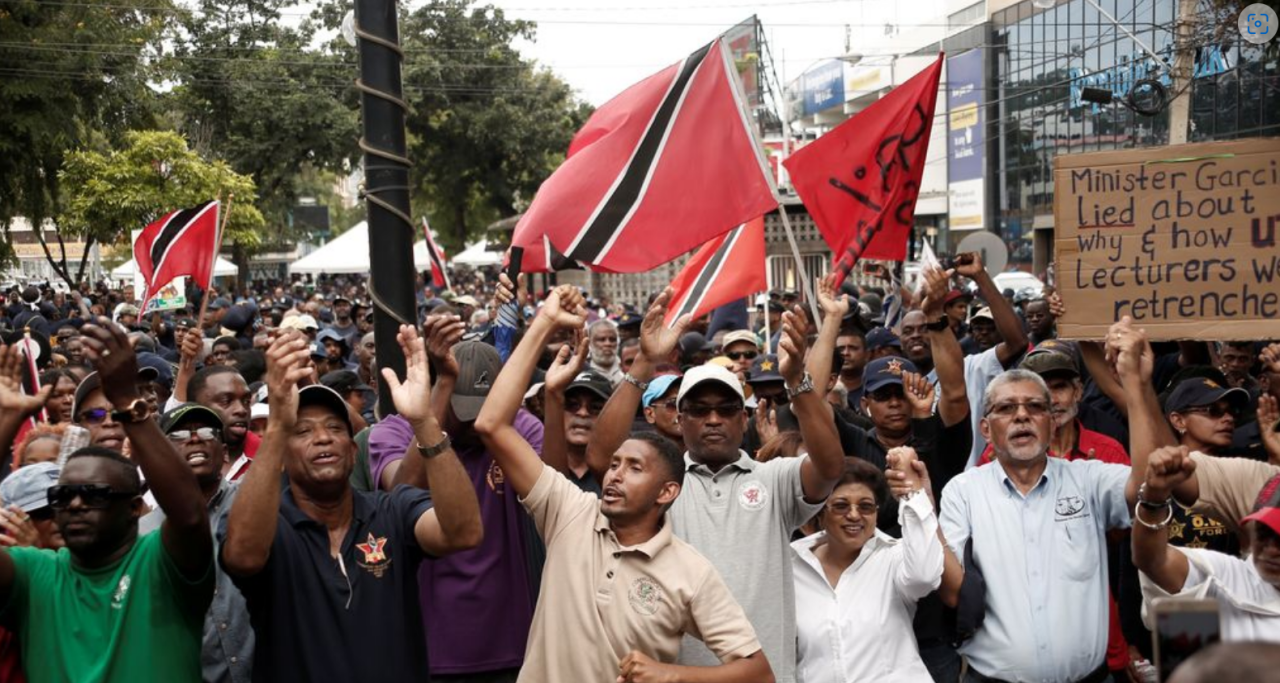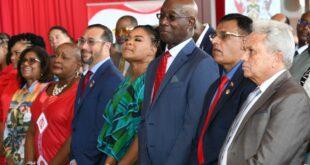“[…] The role of the masses is also seen in their response to NJAC’s call for the transformation of the Trinidad and Tobago economy […] where for the first time Africans and Indians began to set up businesses right across the nation, which they also supported to guarantee their success.
“Up to 1970, African and Indian participation was only 3.8% and 4% respectively—even though together they comprised 80% of the population their total ownership was only 7.8%.
“[…] The records are there to prove beyond a shadow of a doubt that the very people who have been consistently denied their space in the sun over the years (both before and after Independence), when given one small window of opportunity under the right leadership, were able to set the nation on a pathway to national transformation in every sector and sphere of endeavour…”

(Courtesy Embau Moheni/NJAC)
The following is the eleventh column in a NJAC series on their contribution to Trinidad and Tobago society after the ‘Black Power Revolution’ of 1970:
The Trinidad and Tobago revolution is the most uplifting and fruitful experience in our nation’s history. Sadly, today’s generation knows nothing about that great movement. Yet a grasp of this period in our history is critical for us to appreciate the problems we now face and the best ways to deal with them. Our nation is in a crisis, and that period of the 1970s has valuable solutions we now need.
First and foremost, we must understand the timely and leading role the population played in laying a solid foundation for T&T during the1970s. Above everything else, the most important truth is, that the ‘Revolution was the People and the People was the Revolution’.
The steadfast drive of the men, the charming militancy of the women and the energetic vibrancy of the youth all came together at work, in culture and the arts, in the schools, universities and the streets to release the creative energy of the people in one massive push for change.
YES! The revolution was executed by the PEOPLE! The Trinidad and Tobago population! The men, women, youth, and even children, who marched for 55 days in the blazing sun, demanding a better T&T!

The thousands who packed Woodford Square, the Scarborough car park and the Couva car park to demand a just society. The 5,000 students who packed the Chaguaramas convention centre to tell the prime minister that they wanted an education that was relevant to the needs of Trinidad and Tobago and Caribbean people. And those who were brutalised and victimised and refused to bow or bend.
There can be no doubt that the revolutionary changes of the 1970s came through the blood sweat and sacrifices of the masses.
Of this, we must be very proud, for along with Chief Servant Makandal Daaga and NJAC, they changed the course of history and brought new hope to the underprivileged and downtrodden. They demanded the principles of mobilisation, consultation and participation to have a say in determining their own lives, and those of the generations to come.
What the population achieved in the 1970s is best described as ‘rejuvenation and rebirth’. This was driven by the mass inspiration we got from the revolution and the deep sense of self-worth and self-reliance which the ‘New Consciousness’ instilled in us.
The result was an overwhelming ocean of change, executed by the masses in their distinct colourful and creative Trinbagonian style.

(Courtesy Embau Moheni/NJAC)
The people sought to give life to the objectives of the movement. NJAC’s principle, ‘Be a Brother, Be a Sister’ was used to strengthen the bonds within the communities and the principle, ‘Respect and Elevate the Woman’ brought new respect for our womenfolk.
This was evident in changes in the type of calypsos that were composed about our women after 1970. Calypsos of pride replaced calypsos that disrespected our women. Our people, and artistes, in particular, began to accept greater responsibility for promoting justice, equality and the liberation of the people.
There were calypsonians such as Brother Valentino (honoured at the 2020 Young Kings competition for his 50 years of commitment and service to the ideals of the revolution) with calypsos like Liberation, Barking Dogs and No Revolution; Mighty Duke’s Memories of 1970, Black is Beautiful and the Brotherhood of Man; Maestro’s Black Identity; Black Stalin’s Nothing Ain’t Strange and Caribbean Man; Chalkdust’s Ode to African Liberation; Tobago Rio’s The Struggle and Stop Fooling and so many more calypsos and calypsonians, too many to mention.
It should be noted that Brother Valentino was given the title ‘The People’s Calypsonian’ for his consistent use of his art to promote consciousness, equal rights and liberation.

(Copyright NCTT.Org)
Also arising out of the revolution were poets of liberation such as Lasana Kwesi, who published his book of poems Giving Back to My People and Abdul Malik, also called the Bad Poet, who used his art to advocate for an end to the exploitation and oppression of the people (not the same Abdul Malik who came in from England and was hung for murder in 1973).
There was also Cetswayo whose Poems of Consciousness and Pearl Eintou Springer (an awardee at NWAC’s 2020 National Calypso Queen Competition for her progressive literary works). Then there is Brother Resistance (Lutalo Masimba), whose very name reflects the defence of the people against the wrongs of the power elite.
The objective was to achieve true independence, for one people, with one destiny. In this quest, the people stood firm in the face of the blatant, diverse and continuous attacks on the movement from the state and its accomplices. These attacks were most severe during the first state of emergency (21 April-20 November 1970).
With the incarceration of the people’s leaders during the emergency, the state took advantage and unleashed a season of terror against the leaderless population. There were arbitrary arrests, physical brutality, trumped-up charges and unjust charges for breaches of the state of emergency or the curfew regulations.
A favourite strategy of the police when they caught you close to 6.00 pm (the curfew was from 6.00 pm to 6.00 am) was to engage you and run down your time and then arrest you for breaking the curfew. There were also instances of the rape of women found breaching the curfew hours.

(Copyright AP Photo)
For seven months the people were victims of psychological warfare, which was designed to break their will and force them into submission. The police were made to abuse their emergency powers with the intention of cultivating fear in the hearts of the population at all costs.
However, the people resisted all attacks courageously. On the first day of the state of emergency, for instance, the masses came onto the streets of Port of Spain, central Trinidad and Scarborough in their thousands, in open defiance of the ‘emergency’ regulations.
The East Indians in Central tried to march into Port of Spain. They were attacked four times before the police were able to disperse them. Thousands gathered in Woodford Square and the Scarborough car park. In Tobago, a huge rally with thousands of persons, mainly of students, packed the Scarborough car park for several hours before they were eventually broken up by the police shortly after 3pm.
With the removal of the people’s leaders, most of whom were in detention, the resistance eventually caved.
Our people also stood firm and defied the draconian Public Order Act, which the government tried to pass during the repressive seven-month state of emergency in 1970. The government was forced to back down and put this oppressive Act into the garbage heap of history.

(Copyright Government Information Services via panonthenet.com)
This law would have given the government the power to tell persons where they could or could not live, what type of businesses they were allowed to set up or work in and what tools they were allowed to use.
The Public Order Act was intended to give the government dictatorial powers and rule the country under a permanent state of emergency. This the public rejected emphatically. But even with this rejection of the act, the state used the state of emergency to apply terror tactics to imbed fear in the hearts of the public.
Quite a number of people have spoken about the imprisonment and harassment of the NJAC leadership. And the leadership has endured a tremendous amount of persecution. Not much has been said, however, about the brutal assault which the population endured during this period. This seems to be one of the nation’s best-kept secrets.
Not even the brutality and oppressive measures unleashed by the government were enough to deter the population in their efforts to fulfil their dreams for a better country.
So strong was the people’s resistance, that the government declared a second state of emergency one year later, from October 1971 to June 1972. And while the first was for seven months, the second was for eight months. Once again, the NJAC leaders were illegally imprisoned, denying the people access to their true leaders.

(Courtesy Embau Moheni/NJAC)
The role of the masses is also seen in their response to NJAC’s call for the transformation of the Trinidad and Tobago economy. The People’s Sector emerged as a vibrant new dimension in T&T’s economy, where for the first time Africans and Indians began to set up businesses right across the nation, which they also supported to guarantee their success.
Up to 1970, African and Indian participation was only 3.8% and 4% respectively—even though together they comprised 80% of the population their total ownership was only 7.8%.
As a result, 1970 was proclaimed the Year of Small Businesses, 1971, Co-operatives Year and 1972, Credit Unions Year. It is also on record that the decade of the 1970’s achieved record-breaking growth in the asset base among Credit Unions of over 1,000%.
The records are there to prove beyond a shadow of a doubt that the very people who have been consistently denied their space in the sun over the years (both before and after Independence), when given one small window of opportunity under the right leadership, were able to set the nation on a pathway to national transformation in every sector and sphere of endeavour.
The movement also had a huge impact on industrial relations and workers’ rights. Workers became more organised, progressive and prepared to act in defence of their rights.

(Courtesy IRCP.Gov.TT)
Trade Unions such as OWTU and TIWU reaped huge benefits from the ‘New Consciousness’ that was sweeping the country. Workers flocked to the more progressive trade unions in vast numbers.
In their efforts to curb the rise of labour, the government of Dr Eric Williams introduced yet another anti-labour piece of legislation, in 1972, the Industrial Relations Act (IRA). This also failed to crush the workers.
Credit and honour must be given to the Trinidad and Tobago population for their heroic struggles in making the great movement of 1970 the remarkable and enduring phenomenon it was and continues to be.
“Have faith in Truth. It is one of the most powerful forces in the universe.” – Chief Servant Makandal Daaga
Want to share your thoughts with Wired868? Email us at editor@wired868.com.
Please keep your letter between 300 to 600 words and be sure to read it over first for typos and punctuation.
We don’t publish anonymously unless there is a good reason, such as an obvious threat of harassment or job loss.
 Wired868 Wired868 for smart sport news and opinion
Wired868 Wired868 for smart sport news and opinion
